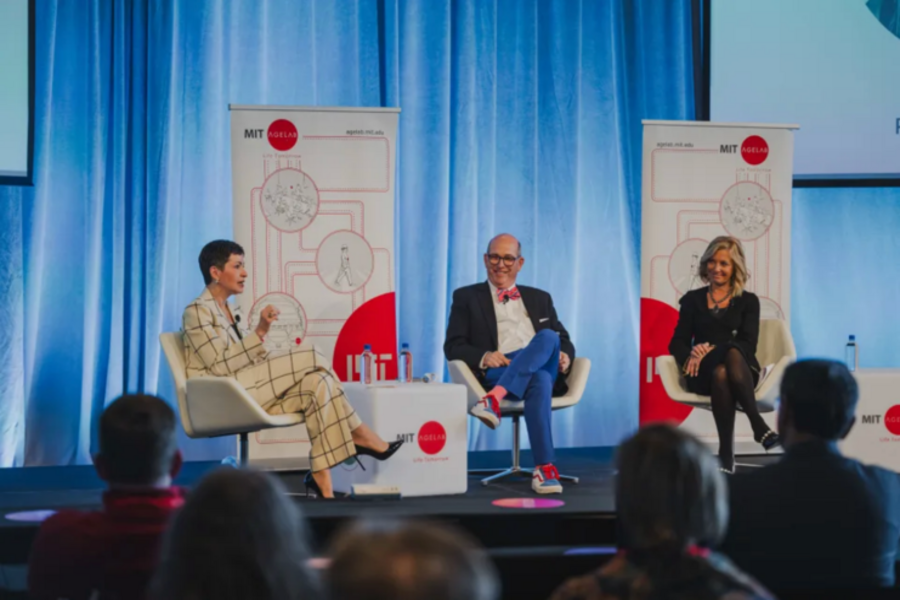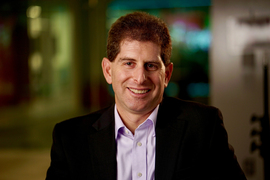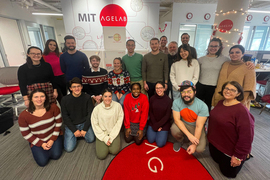How can people better imagine and plan for their future selves? A two-day event hosted at MIT featured two chief executives at the forefront of an emerging industry centered around helping the public prepare for longer lives. Karen Lynch, CEO of CVS, and Penny Pennington, managing partner at Edward Jones, were the opening speakers for an MIT AgeLab symposium highlighting how new technologies, changing consumer preferences, and increasing life expectancy will shift the financial advisory profession into a new industry called longevity planning.
As described by MIT AgeLab Director Joseph Coughlin, longevity planning is the transformation of the financial services and retirement planning industries into a holistic business of advice and services to help people navigate a 100-year lifespan.
The first step toward ensuring quality of life over 100 years is to know how to prepare for it. Is it possible to predict how long each of us can expect to live? Are there tools available that can help people better imagine and empathize with their future selves? Can we imagine advice and planning that is better tailored toward realizing our goals for later life?
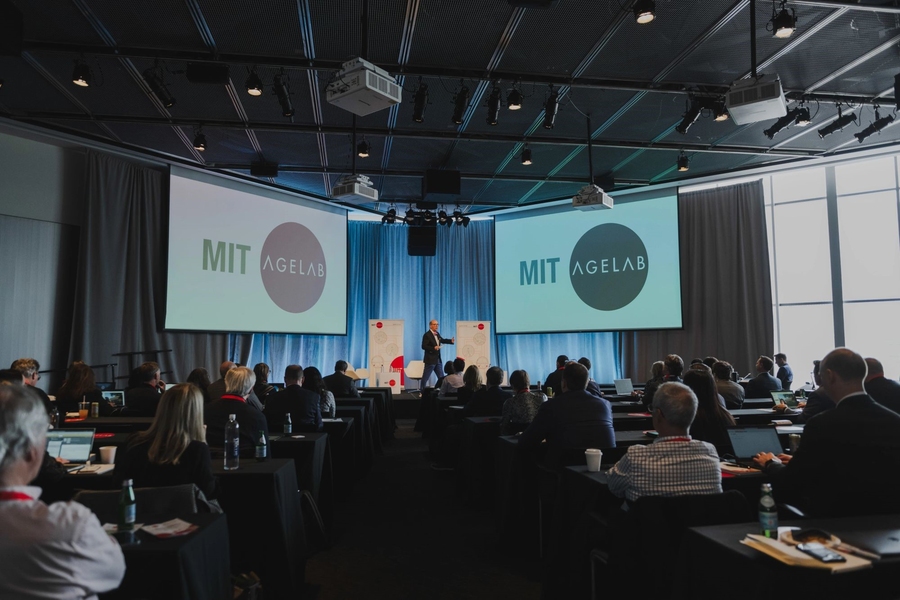
The fireside chat between Lynch of CVS and Pennington of Edward Jones brought together major leaders in health care and finance, two bookends of longevity. “We can help people on their journey to live better, longer,” Lynch said. “The health care system has many entry points. CVS Health brings them together to deliver better health at lower costs through simpler, more convenient experiences. We engage consumers and connect people to care when, where, and how they want it.”
According to research from Edward Jones, financial advisory clients have four main priorities, in order of importance: their health, their family, their purpose, and finally, their financial plan. "During our conversation, Karen and I agreed that longevity planning for both the health and wealth industries has to be transformational, not transactional,” Pennington said. “Our industries need to be focused on advancing wellness — physical, emotional and financial — for our clients and our communities to help more people thrive in every stage of life.”
A follow-up panel of experts in real estate and retail highlighted trends in consumer behavior. Brian Beitler, founder of Sune, an online retail company, said that contemporary consumers are defined by three qualities: They are more exploratory (and so less loyal), more discerning (due to being more information-saturated) and more influential (that is, more capable of generating success for their preferred products). Janice Dumont, CEO of Advisors Living, a residential real estate company, talked about the importance of crafting immersive experiences for customers who are considering making a large purchase like buying a home — not just providing information, but engaging people.
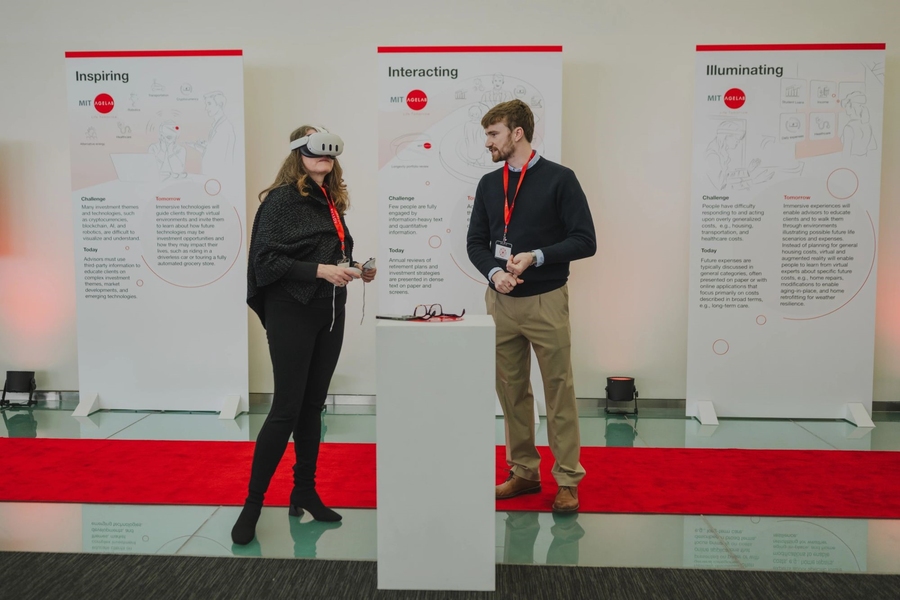
The second day of the symposium focused on new technologies that have potential to guide longevity planning. Virtual reality, artificial intelligence, and health prediction technologies, among others, are tools that can help people imagine and predict their futures. Each panel was accompanied by a reflection session of financial advisors, who discussed how these new technologies might impact their industry.
In a panel on cutting-edge health diagnostic testing, Li-Huei Tsai, director of MIT's Aging Brain Initiative, discussed the potential of genetic testing to identify patients’ predispositions toward Alzheimer’s disease. Alzheimer’s disease, which remains without a cure, could be better managed if identified as a risk earlier in life. Rita Shaknovich, vice president of medical affairs at Grail Inc., a health diagnostic company, discussed the development of technologies that can detect cancer at early stages through a blood test, with the aim of rendering the emperor of maladies a manageable chronic condition instead of an often fatal one.
A later panel focused on applications of artificial intelligence in medicine and health care and its implications for other industries, including financial services. Pranav Rajpurkar, assistant professor of biomedical informatics at Harvard Medical School, discussed recent studies finding that when it came to providing medical advice online, an AI chatbot was viewed as more empathetic than a human doctor. For financial advisors and other professionals, this finding suggests both the promise and portent of AI-driven chatbots in client-facing industries.
Joe Kvedar, professor of dermatology at Harvard Medical School, former president of the American Telemedicine Association, and a self-described telemedicine evangelist, highlighted a key limit for new technologies to transform patient care in medicine: reluctance from patients, who may be protective of their privacy and autonomy, to adopt them, even if they are proven effective.
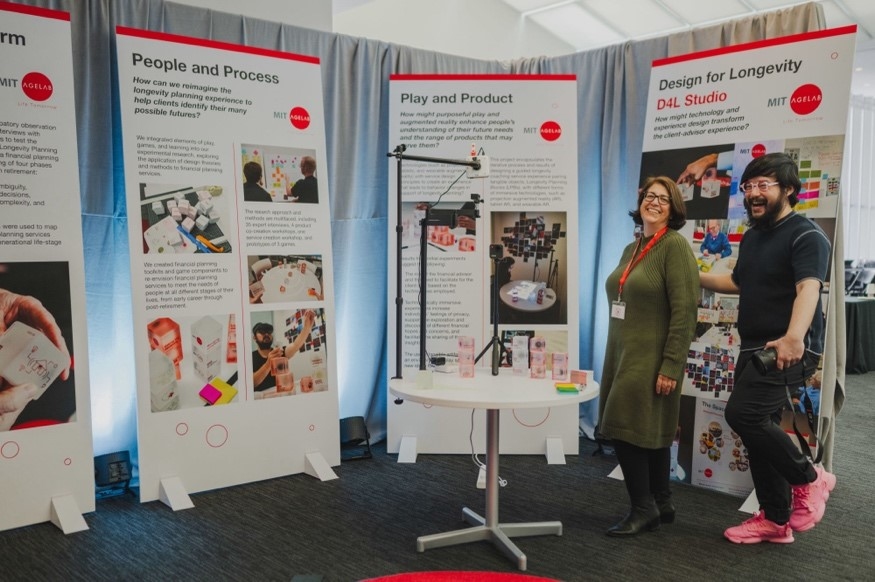
The last session of the symposium discussed the use of virtual and augmented reality (VR and AR) to help people imagine their future selves. Sheng-Hung Lee, a PhD candidate with the MIT AgeLab, outlined his project called Design for Longevity, which uses AR and service design principles to enhance conversations between financial advisors and clients. Sara Wilson, a PhD student with the AgeLab, showcased a VR game that shows people how the future — in this case, the future of the biosphere — might be affected by their choices and behaviors.
The symposium was sponsored and attended by members of the Preparing for Longevity Advisory Network, or PLAN, an MIT AgeLab research consortium that aims to transform the financial services industry to become more engaged in helping people better prepare for and enjoy longer lifespans. PLAN members span advisory firms and financial product manufacturers from around the world.
